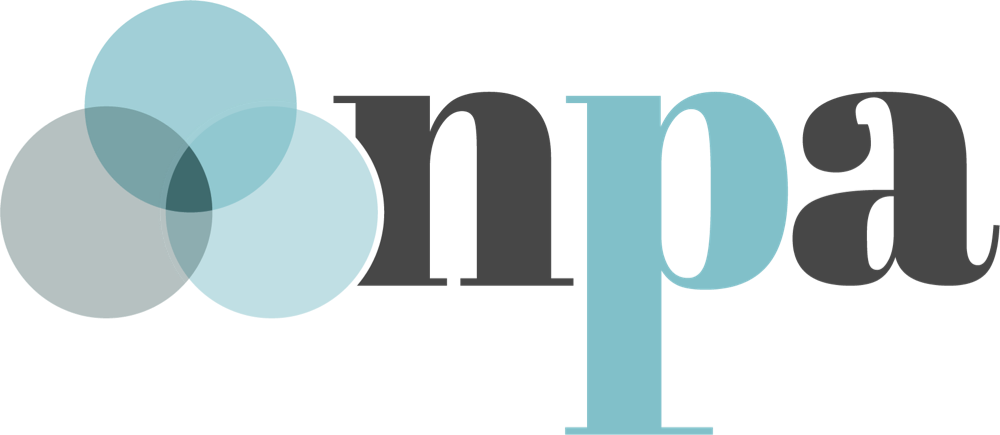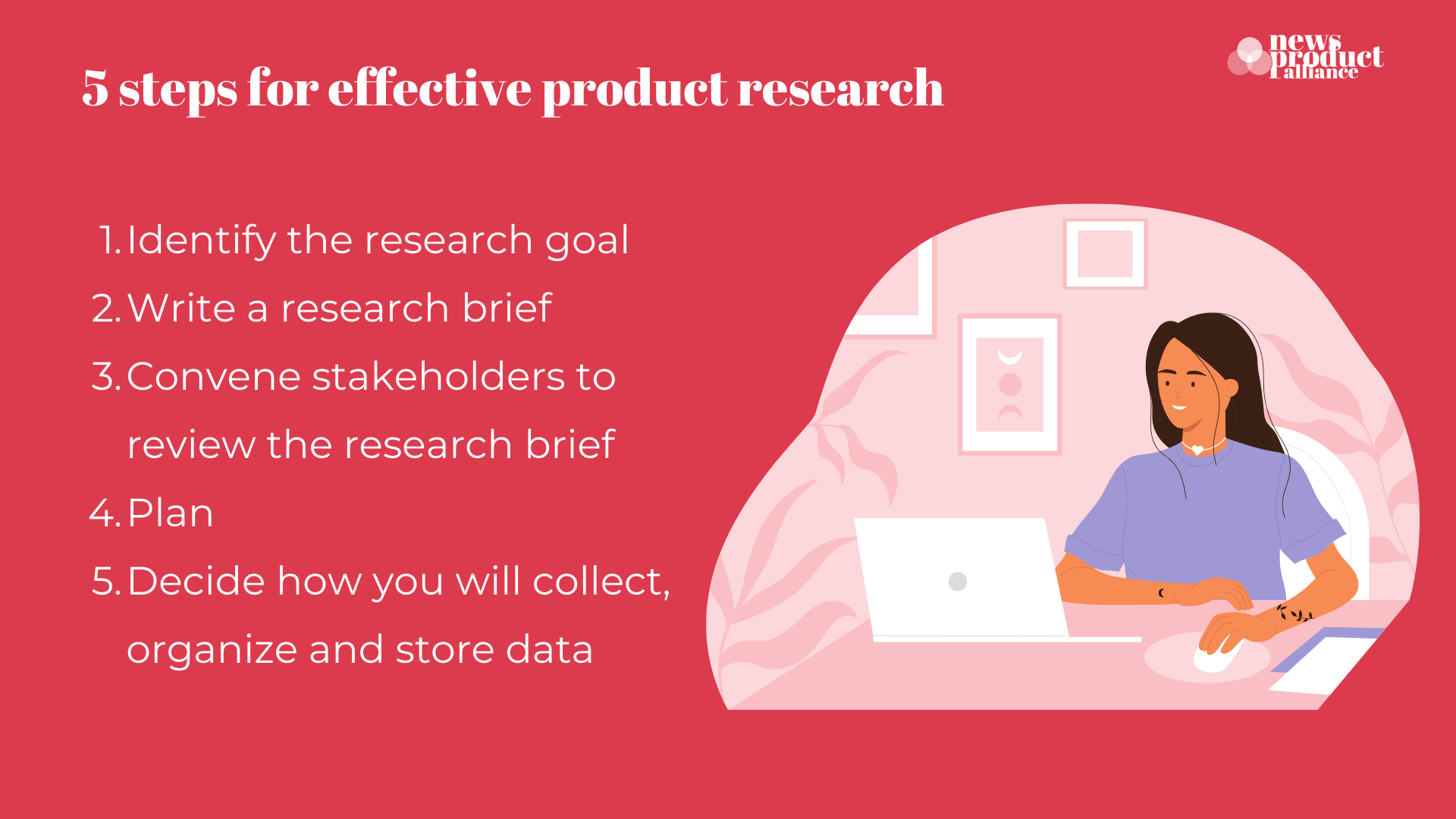Planning for effective product research
A guide to determining product research objectives and creating a project plan
Presented by Ariel Zirulnick
INTRODUCTION
The first step to conducting actionable product research is to identify what you need to learn from it: your research goal. It sounds obvious to identify your goal first, but many people don’t. Instead, they approach research sprints like this: “I want to find out some things about my users so I can come up with some ideas for new products to make for them” or “I don’t know what to do next, so I’m going to ask my users some questions and maybe that will give me direction.”
With this approach, you are likely to ask extraneous questions, fail to ask questions that would be useful to you, and waste your time and your users’ time. When you set a research goal, you should be able to imagine taking an action or making a change to your workflow, products or coverage areas as a result of the insights you gain.
An effective product research sprint doesn’t just have a clearly defined goal. It also has a broader research brief that helps align the team on the goal and timeline and keeps less-involved stakeholders up-to-speed. The research brief will keep you focused on questions you set out to answer and stay in scope.
In this guide, you’ll learn how to draft a research goal and create a research brief that outlines how to collect the data you need.
IN PRACTICE
Use the tips and concepts in this section to cultivate a product culture in your newsroom
Identify the research goal
Some questions to ask yourself to hone in on the research goal:
What decisions do we need to make, and what insights must we gather to make them?
What assumptions are we making about our users, and how might we confirm or disprove them?
What are our organizational goals, and what insights are we lacking that would help us meet those goals?
A strong research goal is connected to an organizational goal. If these goals are not aligned, you risk not getting the resources or support you need to conduct the research or act on the insights you gain.
Here’s an example of what a research goal aligned with broader organizational goals looks like:
Organizational goal: Retain 70 percent of members on a rolling annual basis.
Research goal: Find out what parts of the membership experience are most valuable to existing members and which ones aren’t valuable.
Write a research brief
Once you have a clear goal in mind, write a research brief. This step will help you focus, begin making a plan, and present the research sprint to others.
A research brief should include:
Background
What problems are you facing?
What organizational goal(s) does this research serve?
What insights do you already have?
Your research goal
What decisions are you trying to make?
How will this research inform those decisions?
What are your expected outcomes?
Research method/methods (See “Getting started with product research”)
Who you need to hear from and how you will recruit them
A draft survey or interview script
People Nerds has more detail on what goes in a research brief.
Convene stakeholders to review the research brief
Who will make decisions based on the insights you collect? Who needs to make resources available to act on the insights? Who interacts regularly with your users already?
These are the types of people you will share your research brief with. Invite their feedback and make any necessary adjustments. Discuss what level of information each stakeholder needs during the research sprint and after.
Make your plan
Once you have a signoff, it’s time to build the research roadmap. There are four phases:
Designing the research
Data collection
Synthesis
Applying insights
I like to begin by identifying the date that I hope to begin applying the insights and work backwards from there. I prefer to identify a start date and end date for each phase, rather than just a deadline, because it ensures that I start each phase with plenty of time for the work.
New and experienced researchers alike tend to underestimate how long synthesis will take. A good rule of thumb is to anticipate spending at least one hour on synthesis for every hour of interview time.
Decide how you will collect, organize, and store data
By now you know what form your data will take: survey responses, interview notes, etc. Before that data starts coming in, figure out your plan for organizing it. This isn’t just important for your own internal organization. Users are increasingly reluctant to share information without first being told how their information will and won’t be used and how it will be securely stored.
Consider the questions below as you decide how to collect, organize, and store your data:
How will you name or number the interview files?
How will you tag the interviews?
How often will you take stock of the data you have?
Where will all of this be stored?
How will you make these insights accessible to others in the organization?
What is your data retention policy for information collected during product research?
TERMS
Definitions for product terms referenced in this guide are sourced from NPA’s crowd-sourced product glossary
Stakeholder
The people with interest in or who may be affected by a product’s outcome. Stakeholders may be internal and cross-departmental (e.g. editorial, marketing, development, etc.), and external (e.g. product audience/user base).
RELATED READINGS / RESOURCES
Conducting Audience Research - The Membership Guide |
User research: this more efficient approach informed two key products at The Conversation - Khalil A. Cassimally
Membership Puzzle Project research brief for De Correspondent - Membership Puzzle Project
Just Enough Research - Erika Hall
How to Write a User Research Plan that Sets Your Project up for Success - People Nerds
ABOUT THE AUTHOR
Ariel Zirulnick
Ariel Zirulnick is the senior editor for community engagement at KPCC/LAist in Los Angeles. In this role she works at the intersection of community engagement, editorial, and product strategy to ensure that their journalism consistently serves and centers Angelenos’ needs.
Prior to KPCC/LAist, she led the Membership in News Fund and Membership Guide at the Membership Puzzle Project, a global public research project studying membership models in the news. She is a frequent speaker and instructor on membership, engagement routines, and audience research. She is a member of the 2023 cohort of the CUNY Executive Program in News Innovation in Leadership and is an alumna of the Poynter Women’s Leadership Academy and Miami Fellows.



